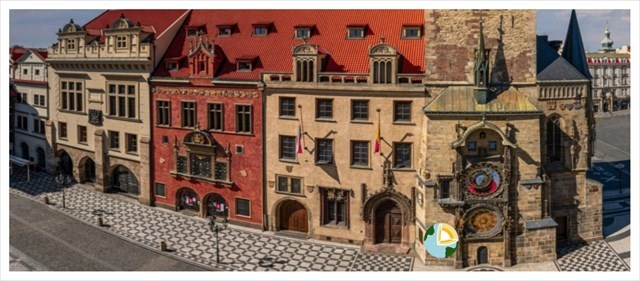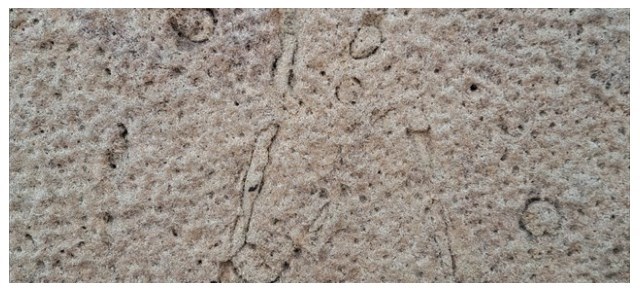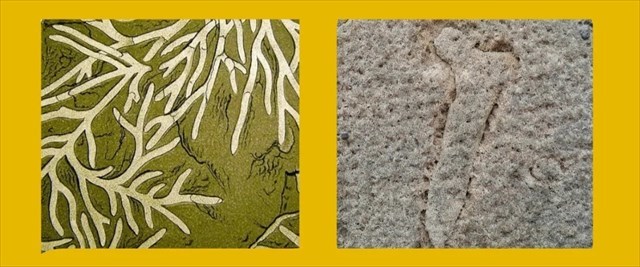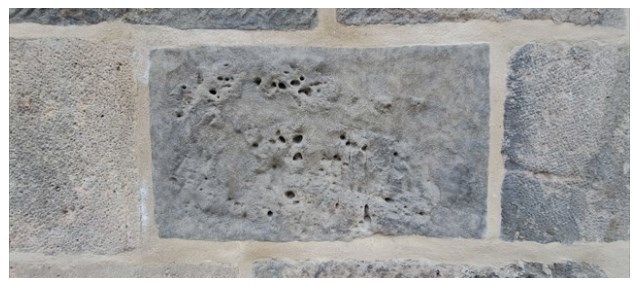|

 Staroměstská radnice s Orlojem, jedno z nejnavštěvovanějších míst světa ukrývá tajemství, se kterým vás seznámí má další EarthCache. Staroměstská radnice s Orlojem, jedno z nejnavštěvovanějších míst světa ukrývá tajemství, se kterým vás seznámí má další EarthCache.
 The Prague Old Town Hall, one of the most visited places in the world, hides a secret which my another EarthCache will show you. The Prague Old Town Hall, one of the most visited places in the world, hides a secret which my another EarthCache will show you.

Staroměstská radnice / Prague Old Town Hall  Staroměstská radnice je tvořena souborem několika historických domů. Svůj počátek nalézá již v roce 1338, kdy se stala sídlem správy Starého Města pražského. Nemalý byl i její význam reprezentační – dokládá jej i řada historických interiérů, které si dodnes zachovaly svou původní podobu. Mezi nimi vyniká Stará radní síň z počátku 15. století, která náleží k nejmalebnějším gotickým interiérům v Evropě. Složitý systém středověkého sklepení, který se pod radničními domy nachází, je pak dokonce starší než radnice samotná – jeho románská část je nádherným dílem architektury 12. století. Staroměstská radnice je tvořena souborem několika historických domů. Svůj počátek nalézá již v roce 1338, kdy se stala sídlem správy Starého Města pražského. Nemalý byl i její význam reprezentační – dokládá jej i řada historických interiérů, které si dodnes zachovaly svou původní podobu. Mezi nimi vyniká Stará radní síň z počátku 15. století, která náleží k nejmalebnějším gotickým interiérům v Evropě. Složitý systém středověkého sklepení, který se pod radničními domy nachází, je pak dokonce starší než radnice samotná – jeho románská část je nádherným dílem architektury 12. století.
Nároží historické budovy vévodí mohutná hranolová věž o výšce 70 m, která nabízí ty nejkrásnější výhledy na historické jádro Prahy. Součástí interiéru věže je moderní výtah, jenž zajišťuje pohodlný přístup až na vyhlídkový ochoz, fasádu zdobí naopak starobylý orloj z roku 1410, prvotřídní památka světového významu.
Nejstarší část komplexu tvoří jižní křídlo s nádhernou věží s arkýřovou kaplí a unikátním orlojem, na kterém se každou celou hodinu (9 – 23 hod.) objevuje 12 apoštolů. Východní novogotické křídlo radnice bylo zničeno během Pražského povstání 8. 5. 1945 a nebylo již nikdy obnoveno. Návštěvnický okruh tvoří gotická kaple, reprezentační sály, podzemí a věž.
 The Old Town Hall is formed by a complex of several historic buildings. Its beginnings date back to 1338 when it became the seat of the administration of Prague's Old Town. Its significance was considerable in terms of representation, as evidenced by a number of historical interiors that have preserved their original appearance to this day. Among them, the Old Council Hall from the early 15th century stands out, belonging to the most picturesque Gothic interiors in Europe. The intricate system of medieval cellars located beneath the town hall buildings is even older than the town hall itself – its Romanesque part is a splendid work of 12th-century architecture. The Old Town Hall is formed by a complex of several historic buildings. Its beginnings date back to 1338 when it became the seat of the administration of Prague's Old Town. Its significance was considerable in terms of representation, as evidenced by a number of historical interiors that have preserved their original appearance to this day. Among them, the Old Council Hall from the early 15th century stands out, belonging to the most picturesque Gothic interiors in Europe. The intricate system of medieval cellars located beneath the town hall buildings is even older than the town hall itself – its Romanesque part is a splendid work of 12th-century architecture.
Dominating the corner of the historical building is a massive square tower standing at a height of 70 meters, offering the most beautiful views of Prague's historical core. Part of the tower's interior is a modern elevator that provides convenient access to the lookout deck. On the facade, on the other hand, an ancient clock from 1410 adorns it, a first-rate monument of global significance. The oldest part of the complex consists of the southern wing with a beautiful tower with a bay window chapel and a unique astronomical clock, on which the 12 apostles appear every hour (9 a.m. to 11 p.m.). The eastern Neo-Gothic wing of the town hall was destroyed during the Prague Uprising on May 8, 1945 and was never rebuilt. The visitor circuit consists of the Gothic chapel, representative halls, the underground and the tower.

Ichnofosilie / Ichnofossils
 Mořské sedimentární horniny vznikají v důsledku transportu a ukládání sedimentů vodou. Fosilní stopy života (= ichnofosilie) jsou struktury zanechané živými organismy (nikoli skutečné zbytky) v sedimentu na mořském dně. Mohou to být stopy pohybu, stopy odpočinku, stopy pastvy nebo krmení, ale také struktury fosilních obytných budov. Ichnofosilie ukazují "fosilní chování" v pravém slova smyslu a dávají nám pohled do geologie, ekologie a biologie bývalých ložisek a stanovišť, které jdou daleko za informace poskytované "skutečnými" fosiliemi. Ichnofosilie přímo interagují s environmentálními faktory, které je obklopují, jako je složení sedimentu, obsah kyslíku, hloubka vody, zásoba potravy, chemismus sedimentu a mořské vody, teplota a klima. Mořské sedimentární horniny vznikají v důsledku transportu a ukládání sedimentů vodou. Fosilní stopy života (= ichnofosilie) jsou struktury zanechané živými organismy (nikoli skutečné zbytky) v sedimentu na mořském dně. Mohou to být stopy pohybu, stopy odpočinku, stopy pastvy nebo krmení, ale také struktury fosilních obytných budov. Ichnofosilie ukazují "fosilní chování" v pravém slova smyslu a dávají nám pohled do geologie, ekologie a biologie bývalých ložisek a stanovišť, které jdou daleko za informace poskytované "skutečnými" fosiliemi. Ichnofosilie přímo interagují s environmentálními faktory, které je obklopují, jako je složení sedimentu, obsah kyslíku, hloubka vody, zásoba potravy, chemismus sedimentu a mořské vody, teplota a klima.
Je důležité pochopit, že ichnofosilie mohou vytvořit různé organismy se stejnou velikostí a chováním, stejný organismus může mít různé chování, které vytváří různé stopy (např. nora, stezka, krmná struktura a exkrementy od stejného jedince nebo typu jedince), může stejný organismus zanechat různé stopy v různých typech sedimentů (měkké bahno versus pevné bahno versus písek). Stejný organismus může zanechat různé stopy v různých částech mořského dna (nahoře, uvnitř nebo na základu).
Vznik zkamenělin je výsledkem mnoha fyzikálních a chemických procesů, které se označují jako procesy fosilizační. Většina odumřelých organizmů rychle podléhá rozkladným procesům, na kterých se podílí negativní působení atmosféry a vody, mechanické vlivy okolního prostředí a činnost mikroorganizmů.  Sedimentary rocks are formed as a result of the transport and deposition of sediments by water. Trace fossils (= ichnofossils) are structures left by living organisms (not actual remains) in sediment on the sea floor. They can be traces of movement, traces of rest, traces of grazing or feeding, but also structures of fossil residential buildings. Ichnofossils show "fossil behavior" in the true sense of the word and give us insight into the geology, ecology and biology of former deposits and habitats that go far beyond the information provided by "real" fossils. Ichnofossils directly interact with environmental factors that surround them, such as sediment composition, oxygen content, water depth, food supply, sediment and seawater chemistry, temperature, and climate. Sedimentary rocks are formed as a result of the transport and deposition of sediments by water. Trace fossils (= ichnofossils) are structures left by living organisms (not actual remains) in sediment on the sea floor. They can be traces of movement, traces of rest, traces of grazing or feeding, but also structures of fossil residential buildings. Ichnofossils show "fossil behavior" in the true sense of the word and give us insight into the geology, ecology and biology of former deposits and habitats that go far beyond the information provided by "real" fossils. Ichnofossils directly interact with environmental factors that surround them, such as sediment composition, oxygen content, water depth, food supply, sediment and seawater chemistry, temperature, and climate.
It is important to understand that, unlike hard-part remains (body) fossils, the same trace fossil can be made by different organisms with the same size and behavior, the same organism can have different behaviors, which make different traces (e.g., a burrow, a trail, a feeding structure, and excrement all from the same individual or type of individual), the same organism can leave different traces in different types of sediments (soft mud versus firm mud versus sand). The same organism can leave different traces in different parts of a bed (on top, within, or at the base). The formation of fossils is the result of many physical and chemical processes, which are referred to as fossilization processes. Most dead organisms are quickly subject to decomposition processes, which involve the negative effects of the atmosphere and water, the mechanical effects of the surrounding environment and the activity of microorganisms.

Chondrites - stopy / traces
 Chondrites je stopovou fosílií, která se zachovala ve formě malých větvících se nor o stejném průměru, které povrchově připomínají kořeny rostlin. Původ těchto struktur je v současnosti neznámý. Chondrites je nalezen v mořských sedimentech od kambria paleozoika až po současnost. Zejména je častý v sedimentech, které byly uloženy v prostředí s omezeným obsahem kyslíku. Chondrites je stopovou fosílií, která se zachovala ve formě malých větvících se nor o stejném průměru, které povrchově připomínají kořeny rostlin. Původ těchto struktur je v současnosti neznámý. Chondrites je nalezen v mořských sedimentech od kambria paleozoika až po současnost. Zejména je častý v sedimentech, které byly uloženy v prostředí s omezeným obsahem kyslíku.
Existují čtyři uznávané ichnodruhy rodu Chondrites, nicméně byly objeveny také odchylky neznámé taxonomické příslušnosti. Fosílie se skládají z vyplněných dendritických, kořenovitých nor. Větvení se odehrává pod úhlem 30° až 40°, přičemž průměr šachty se pohybuje mezi 0,1 mm a 10 mm a zůstává konstantní v rámci jednoho systému. Chondrites je klasifikován jako fodinichnion.
Chondrites se poprvé objevil v období kambria a je přítomen dodnes. Jedná se o jeden z nejčastějších ichnotaxonů v celém fosilním záznamu a je rozšířen ve všech typech mořských sedimentárních hornin, včetně pískovců, břidlic, vápenců a jílovitých slínů. V našem případě jde o druhohorní Mšenský pískovec.  Chondrites is a trace fossil that has been preserved in the form of small branching burrows of the same diameter, which superficially resemble plant roots. The origin of these structures is currently unknown. Chondrites has been found in marine sediments from the Cambrian period of the Paleozoic era to the present. It is particularly common in sediments deposited in an environment with limited oxygen content. Chondrites is a trace fossil that has been preserved in the form of small branching burrows of the same diameter, which superficially resemble plant roots. The origin of these structures is currently unknown. Chondrites has been found in marine sediments from the Cambrian period of the Paleozoic era to the present. It is particularly common in sediments deposited in an environment with limited oxygen content.
There are four recognized ichnospecies of the genus Chondrites, although variations of unknown taxonomic affiliation have also been discovered. The fossils consist of filled dendritic, root-like burrows. Branching occurs at an angle of 30° to 40°, with the shaft diameter ranging from 0.1 mm to 10 mm and remaining constant within a single system. Chondrites is classified as a fodinichnion.
Chondrites first appeared during the Cambrian period and is present to this day. It is one of the most common ichnotaxa in the entire fossil record and is widespread in all types of marine sedimentary rocks, including sandstones, shales, limestones, and clayey mudstones. In our case, it refers to the Mesozoic Mšeno Sandstone. 
Pískovce / Sandstones
 Pískovce jsou zpevněné psamity. Skládají se nejčastěji z křemenných zrn spojených různým tmelem (křemitý, vápnitý, kaolinický, železitý, jílovitý atd.). Barva pískovců se řídí většinou podle povahy tmelu. CaCO3 nebo kaolin dává pískovcům bělavé zabarvení, při obsahu Fe2O3 mají pískovce barvu červenavou, hydroxid Fe je zabarvuje do hněda nebo rezavě žluta, přítomnost glaukonitu způsobuje zelenavé zabarvení. Pískovce jsou zpevněné psamity. Skládají se nejčastěji z křemenných zrn spojených různým tmelem (křemitý, vápnitý, kaolinický, železitý, jílovitý atd.). Barva pískovců se řídí většinou podle povahy tmelu. CaCO3 nebo kaolin dává pískovcům bělavé zabarvení, při obsahu Fe2O3 mají pískovce barvu červenavou, hydroxid Fe je zabarvuje do hněda nebo rezavě žluta, přítomnost glaukonitu způsobuje zelenavé zabarvení.
Pískovec vzniká zejména rozkladem hornin bohatých na křemen a dlouhodobým tříděním zrn, během něhož byl nestabilní materiál, zejména ten měkčí, rozložen a jemnější části byly odplaveny. Silicové pískovce obvykle najdeme na místech, kde probíhala dlouhodobá abraze zrn a jejich třídění, jako například v sedimentech na plážích (včetně těch u velkých jezer) nebo v pouštním prostředí (pískovce vytvořené zhutněním eolických písků).
Na pískovcích se často vytvářejí různé tvary a formy v důsledku zvětrávání a eroze. Tyto tvary mohou mít různé rozměry, od několika centimetrů až po desítky nebo dokonce stovky metrů. Pískovcový reliéf je výrazný svou bohatostí tvarů.  Sandstones are compacted sediments. They are primarily composed of quartz grains held together by various cements (siliceous, calcareous, kaolinitic, ferruginous, clayey, etc.). The color of sandstones is mostly determined by the nature of the cement. CaCO3 or kaolin imparts a whitish color to sandstones, while sandstones containing Fe2O3 have a reddish color. Hydroxide Fe gives them a brown or rusty yellow hue, and the presence of glauconite can cause a greenish coloration. Sandstones are compacted sediments. They are primarily composed of quartz grains held together by various cements (siliceous, calcareous, kaolinitic, ferruginous, clayey, etc.). The color of sandstones is mostly determined by the nature of the cement. CaCO3 or kaolin imparts a whitish color to sandstones, while sandstones containing Fe2O3 have a reddish color. Hydroxide Fe gives them a brown or rusty yellow hue, and the presence of glauconite can cause a greenish coloration. Sandstone is mainly formed by the decomposition of quartz-rich rocks and the long-term sorting of grains, during which the unstable material, especially the softer material, was decomposed and the finer parts were washed away. Siliceous sandstones are usually found in places where long-term grain abrasion and sorting has taken place, such as in beach sediments (including those near great lakes) or in desert environments (sandstones formed by the compaction of eolian sands).
Different shapes and forms are often created on sandstones due to weathering and erosion. These shapes can have different dimensions, from a few centimeters to tens or even hundreds of meters. The sandstone relief is notable for its richness of shapes.
 Pro zalogování jako "found it" mi musíte na email přes profil poslat odpovědi na následující otázky a úkoly: Pro zalogování jako "found it" mi musíte na email přes profil poslat odpovědi na následující otázky a úkoly:
1) Jak vznikají a co jsou to ichnofosilie?
2) Dojděte k waypointu (za EC ikonkou na prvním obrázku). Zde můžete pozorovat ichnofosilie Chondrites. Pořádně si je prohlédněte a vlastními slovy je popište.
3) Určete, zda se jedná o systém chodeb nebo samostatné dutiny. Proč si to myslíte?
4) Přidejte do logu fotku sebe, nebo vaší GPS s ichnofosiliemi.
 For log as "found it" please send me answers for those questions via my profile: For log as "found it" please send me answers for those questions via my profile:
1) How do they form and what are ichnofossils?
2) Visit the waypoint (behind EC logo in first image). Here you can observe ichnofossils Chondrites. Take a closer look at them and describe them in your own words.
3) Determine whether it is a system of corridors or a separate cavity. Justify your statement.
4) Add a photo of you or your GPS with the ichnofossils to the log.
 Logujte ihned po odeslání odpovědí, pokud bude něco špatně, ozvu se. Logujte ihned po odeslání odpovědí, pokud bude něco špatně, ozvu se.
 Log in as soon as the answers are sent, if there's anything wrong, I'll answer. Log in as soon as the answers are sent, if there's anything wrong, I'll answer.
 |